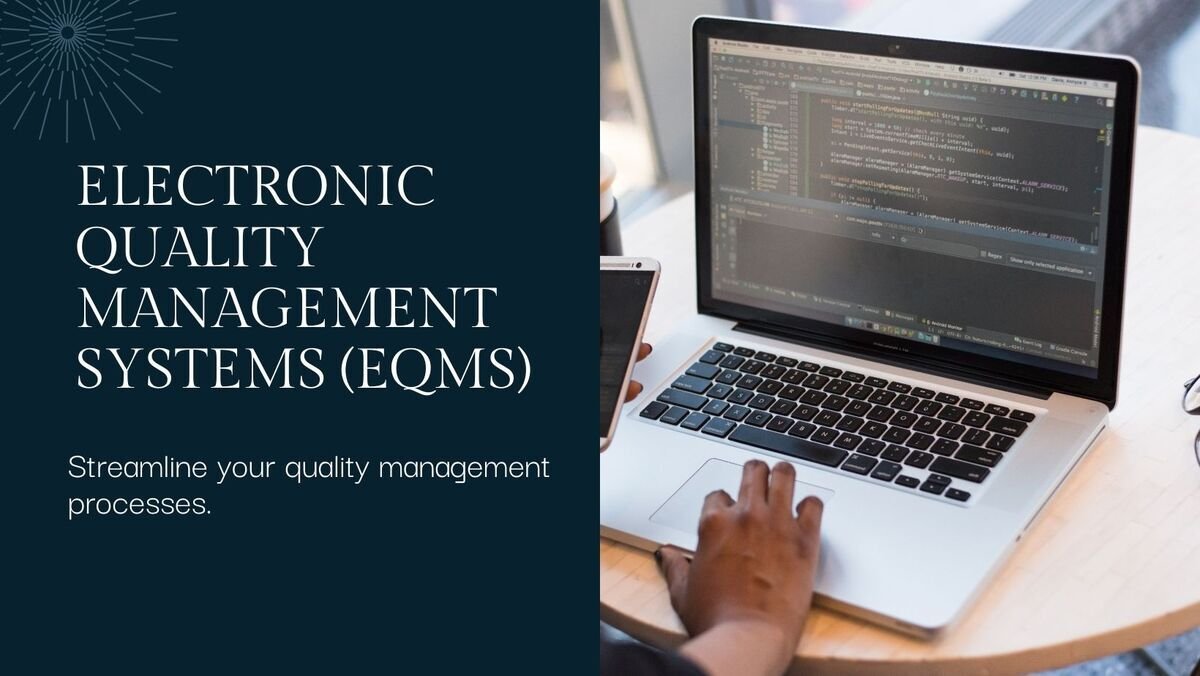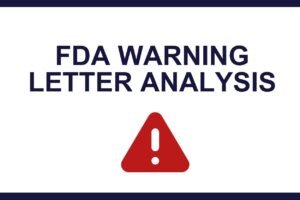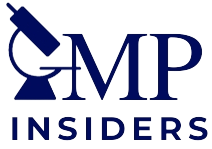Quality management is a critical aspect of any business, especially in highly regulated industries such as healthcare and life sciences. In recent years, the adoption of Electronic Quality Management Systems (eQMS) has gained significant momentum.
These software solutions have proven to be invaluable in streamlining quality processes, ensuring compliance with regulatory requirements, and driving continuous improvement. In this article, we will explore the key benefits, functions, and features of eQMS, as well as the reasons why businesses should consider making the switch to these powerful digital tools.
What Is an eQMS?
An Electronic Quality Management System, or eQMS, is a software solution designed to centralize and automate the various aspects of quality management within an organization. By leveraging technology, eQMS allows businesses to seamlessly manage quality-related tasks such as document control, change management, training management, audit management, and more.
These systems provide a centralized repository for all quality-related data and documentation, eliminating the need for manual and paper-based processes.
Functions and Features of eQMS

eQMS encompasses a range of functions and features that support the effective management of quality processes. Let’s explore some of the key functionalities that organizations can leverage with eQMS.
Audit Management
Audits are an essential part of quality management, ensuring compliance with standards and regulations. eQMS provides a platform for planning, managing, and conducting internal and external audits. It enables organizations to define audit criteria, assign auditors, track audit findings, and implement corrective actions.
CAPA Management
Corrective and Preventive Actions (CAPA) are crucial for addressing non-conformities and preventing their recurrence. eQMS offers comprehensive CAPA management capabilities, allowing organizations to document, investigate, and track CAPA activities. It streamlines the entire CAPA process, from identification to resolution, ensuring timely and effective corrective actions.
Change Management
In a dynamic business environment, change is inevitable. eQMS simplifies change management processes by providing a centralized platform for managing and tracking changes across the organization. It enables businesses to define change requests, assess their impact, implement changes, and ensure proper documentation and communication throughout the change process.
Complaint Management
Customer complaints are valuable feedback that organizations can leverage to improve their products and services.
eQMS facilitates streamlined complaint management, allowing businesses to capture, investigate, and resolve customer complaints efficiently. It ensures proper documentation, root cause analysis, and the implementation of corrective actions to address the underlying issues.
Document Management
Good Documentation Practice is a critical aspect of quality management. eQMS offers robust document management capabilities, enabling organizations to create, review, approve, and control quality-related documents.
It ensures version control, document traceability, and accessibility to authorized users. eQMS also supports document collaboration and electronic signatures, eliminating the need for manual sign-offs.
Risk Management
Effective risk management is essential for mitigating potential quality issues and ensuring the safety and efficacy of products and services. eQMS provides tools and workflows for identifying, assessing, documenting, and managing risks. It enables organizations to implement risk mitigation strategies, track risk controls, and monitor risk levels throughout the product lifecycle.
Training Management
Employee training and competency assessment are critical components of ensuring a skilled and compliant workforce. eQMS simplifies training management by providing a centralized platform for managing training programs, tracking employee certifications, and documenting training records. It streamlines the training process, ensures compliance with training requirements, and enhances employee competence.
Audit Trails
eQMS provides comprehensive audit trails, offering a transparent record of all activities within the system. This not only satisfies regulatory requirements but also enables companies to trace the history of any document or process, aiding in the identification and resolution of issues.
Table 1: Key Features of an eQMS
Feature | Description |
Document Control | Centralized document repository, version control, access control, revision history |
Change Management | Workflow-driven change request and approval process |
Training Management | Employee training records, certification tracking, training program management |
Audit Management | Planning, scheduling, and execution of internal and external audits |
Non-Conformance | Tracking and resolution of non-conforming products or processes |
CAPA Management | Corrective and preventive action management, root cause analysis |
Risk Management | Identification, assessment, and mitigation of risks |
Supplier Management | Supplier evaluation, qualification, and performance monitoring |
Complaint Management | Customer complaint handling, investigation, and resolution |
Analytics and Reporting | Real-time data analysis, trend identification, performance metrics |
The Benefits of eQMS
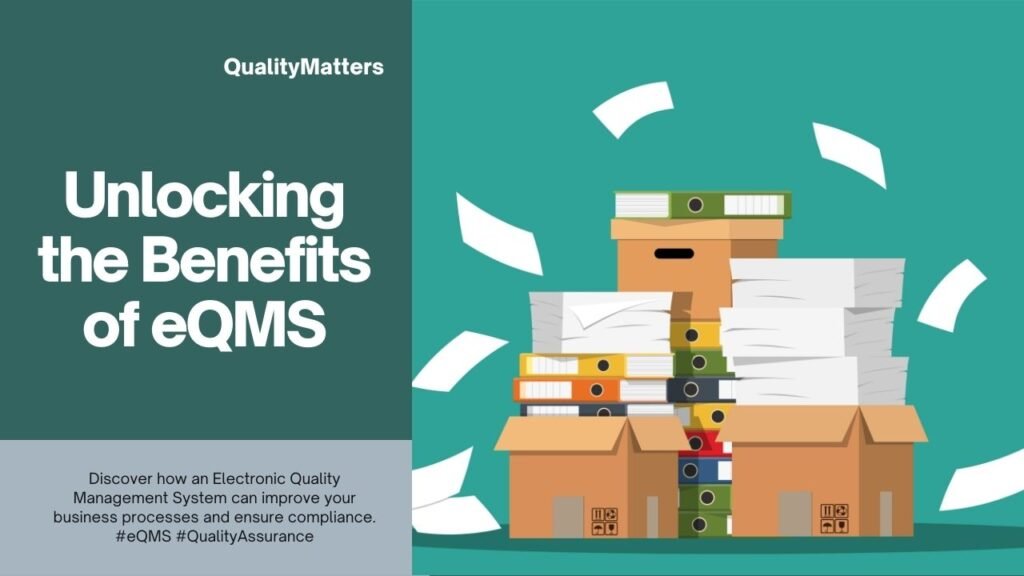
The adoption of eQMS brings numerous advantages to organizations, promoting efficiency, compliance, and continuous improvement. Let’s delve into the key benefits of implementing an eQMS.
1. Improved Efficiency and Productivity
eQMS eliminates the inefficiencies and delays associated with manual processes. By automating tasks such as document control, change management, and training management, organizations can streamline their workflows and reduce administrative burdens. This increased efficiency leads to improved productivity and faster time-to-market for products and services.
2. Enhanced Compliance with Regulatory Requirements
Regulatory compliance is a top priority for businesses operating in regulated industries. eQMS provides a comprehensive framework for ensuring adherence to industry standards and regulatory requirements.
With built-in features such as audit management, CAPA (Corrective and Preventive Actions) management, and complaint handling, organizations can proactively address compliance issues and minimize the risk of non-compliance.
3. Centralized and Accessible Documentation
One of the significant challenges of paper-based systems is the difficulty in accessing and managing documentation. With eQMS, all quality-related documents are stored in a centralized digital repository, accessible to authorized users anytime, anywhere.
This improves document control, version control, and the ability to track document history. Furthermore, eQMS enables the implementation of electronic signatures, ensuring the integrity and authenticity of critical documents.
4. Data-driven Decision Making
eQMS provides organizations with real-time visibility into quality data and metrics. By leveraging powerful analytics and reporting capabilities, businesses can gain valuable insights into their quality management processes. These insights enable data-driven decision-making, identification of trends, and continuous improvement initiatives.
5. Continuous Improvement and Risk Management
eQMS facilitates a culture of continuous improvement and proactive risk management. Through features such as deviation management, risk management, and change management, organizations can identify, assess, and mitigate risks, ensuring the delivery of high-quality products and services.
eQMS also supports the implementation of CAPA processes, enabling organizations to address issues promptly and prevent their recurrence.
6. Real-time Data and Analytics
eQMS provides businesses with real-time access to quality data and analytics. This allows organizations to monitor key quality metrics, track trends, and identify areas for improvement. Data-driven insights enable businesses to make informed decisions, implement targeted improvement initiatives, and continuously enhance their quality management processes.
7. Collaboration and Communication
Traditional paper-based quality management systems often pose challenges in terms of collaboration and communication across different departments and teams. eQMS systems bridge this gap by providing a centralized platform for collaboration and communication. Employees can easily collaborate on quality-related tasks, share information, and communicate updates, leading to improved cross-functional collaboration and alignment.
Challenges and Tips for Implementing eQMS
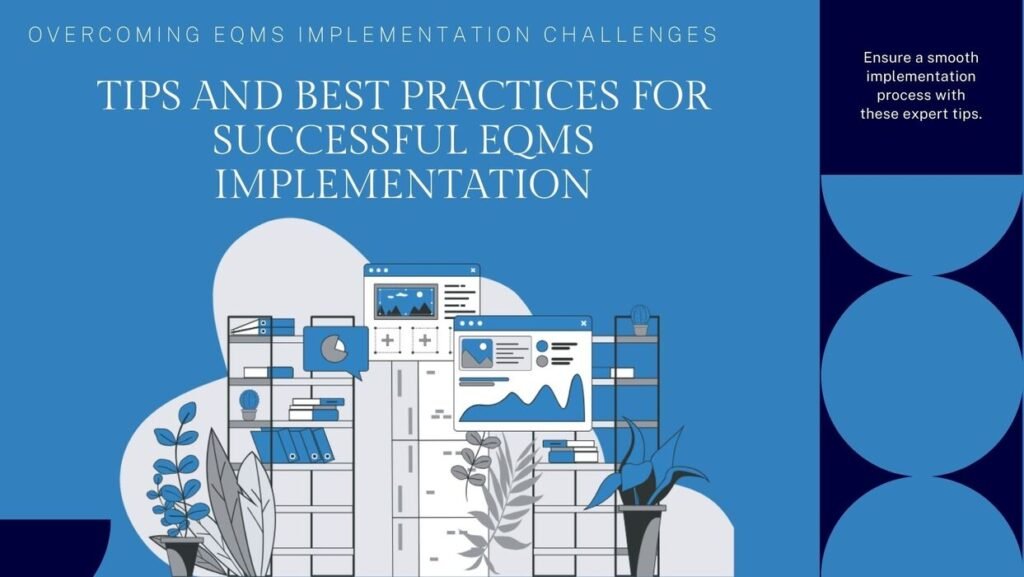
Implementing Electronic Quality Management Systems (eQMS) in the pharmaceutical industry, while promising numerous benefits, comes with its set of challenges. Recognizing and addressing these challenges is crucial for a successful transition to eQMS.
Initial Investment and Implementation Costs
The initial investment required for implementing eQMS can be substantial. This includes costs associated with software licensing, hardware infrastructure, training, and potential consultancy fees.
While the long-term benefits often outweigh the upfront costs, the financial commitment can pose a challenge, especially for smaller pharmaceutical companies. A comprehensive cost-benefit analysis and strategic budget planning are essential to mitigate this challenge.
Tips:
- Cost-Benefit Analysis: Conduct a thorough cost-benefit analysis to showcase the long-term advantages of eQMS implementation, including improved operational efficiency, reduced compliance risks, and potential cost savings over time.
- Phased Implementation: Implement eQMS in phases, prioritizing critical areas and functions. This approach allows for a gradual adoption, spreading out costs and minimizing disruptions.
- Government Incentives: Explore available government grants or incentives that support technological advancements in industries, including the pharmaceutical sector. Some regions offer financial support for companies investing in technologies that enhance compliance and quality.
Resistance to Change
The transition from traditional paper-based systems to eQMS may face resistance from employees accustomed to established processes. Resistance to change can stem from concerns about the learning curve, fear of technology, or skepticism about the benefits of the new system. Change management strategies, effective communication, and robust training programs are essential to overcome this challenge and ensure a smooth adoption of eQMS.
Tips:
- Communication and Training Programs: Develop robust communication strategies to articulate the benefits of eQMS to employees. Implement comprehensive training programs to familiarize staff with the new system, addressing concerns and building confidence in its capabilities.
- Engagement and Involvement: Involve employees in the decision-making process and implementation planning. Engaged employees are more likely to embrace change and actively contribute to the success of the eQMS initiative.
- Change Management Strategies: Employ change management methodologies that focus on understanding and addressing the psychological and emotional aspects of change. This includes clear communication, leadership support, and addressing concerns proactively.
Integration with Existing Systems
Many pharmaceutical companies already have established IT systems and processes in place. Integrating eQMS with existing systems, such as Enterprise Resource Planning (ERP) or Manufacturing Execution Systems (MES), can present technical challenges. Ensuring seamless integration is crucial to avoid disruptions in workflows and to maintain data consistency across the organization.
Tips:
- Comprehensive System Compatibility Checks: Conduct thorough compatibility checks before implementation to ensure seamless integration with existing IT systems. Collaborate with IT experts and vendors to address potential challenges and develop solutions.
- Interdepartmental Collaboration: Foster collaboration between IT, quality, and other relevant departments. This ensures that all stakeholders are involved in the integration process and can provide insights into potential challenges from their respective areas.
- APIs and Middleware Solutions: Utilize Application Programming Interfaces (APIs) and middleware solutions to facilitate data exchange between eQMS and existing systems. These tools can bridge the gap between different software applications, ensuring data consistency.
Data Security and Regulatory Concerns
The pharmaceutical industry operates under stringent regulatory frameworks, and concerns about data security and regulatory compliance are paramount. Ensuring that eQMS complies with industry-specific regulations (e.g., 21 CFR Part 11) is essential. Implementing robust cybersecurity measures, encryption protocols, and access controls is critical to safeguard sensitive information and maintain regulatory compliance.
Tips:
- Compliance-Driven Configuration: Configure eQMS by industry-specific regulations, such as Annex 11 or 21 CFR Part 11 for electronic records and signatures. Ensure that the system’s features, such as audit trails and user access controls, align with regulatory requirements.
- Cybersecurity Measures: Implement robust cybersecurity measures, including encryption protocols, regular security audits, and access controls. Collaborate with cybersecurity experts to address vulnerabilities and stay ahead of evolving threats.
- Regular Compliance Audits: Conduct regular compliance audits to ensure that the eQMS continues to meet regulatory standards. Stay informed about updates or changes in regulations and update the system accordingly.
Implementing an eQMS

Implementing an eQMS requires careful planning and consideration. Here are some key steps to consider when implementing an eQMS:
1. Define Your Objectives and Requirements
Before selecting an eQMS solution, it’s important to clearly define your objectives and requirements. Identify the specific quality management processes that need to be automated and the key functionalities you require. Consider factors such as regulatory compliance, scalability, integration capabilities, and user-friendliness.
2. Select the Right eQMS Solution
Once you have defined your objectives and requirements, conduct thorough research to identify the eQMS solution that best aligns with your needs. Evaluate different vendors, compare features and functionalities, and consider factors such as reputation, customer reviews, and pricing.
Here are some key factors to consider when choosing an eQMS solution:
- Compliance: Ensure that the eQMS software complies with relevant industry regulations and standards, such as Annex 11, FDA 21 CFR Part 11, and ISO 13485.
- Functionality: Assess the functionality and features of the eQMS software to ensure it meets the specific needs of your organization. Consider factors such as document management, audit management, CAPA management, change management, and risk management.
- Scalability: Choose an eQMS solution that can grow with your organization and accommodate future needs. Scalability is essential to ensure that the software can handle increased data volumes, users, and process complexity.
- Integration: Consider the ability of the eQMS software to integrate with other systems and applications used in your organization, such as ERP, CRM, and PLM. Seamless integration improves data transfer and reduces manual data entry.
- Usability: User-friendly software is crucial for successful adoption and utilization. Ensure that the eQMS software has an intuitive interface, clear navigation, and robust search capabilities.
- Vendor Support: Evaluate the level of support provided by the eQMS software vendor. Look for vendors with a track record of customer satisfaction, responsive support teams, and ongoing software updates and enhancements.
By considering these factors, organizations can select an eQMS software solution that aligns with their unique requirements and supports their quality management objectives.
3. Plan and Prepare for Implementation
Develop a comprehensive implementation plan that outlines the key milestones, timelines, and responsibilities. Consider factors such as data migration, system configuration, user training, and change management. Engage stakeholders from different departments to ensure a smooth transition and alignment with organizational goals.
4. Train and Educate Users
User adoption is critical for the success of an eQMS implementation. Provide comprehensive training to users on how to effectively use the system and leverage its functionalities. Create user guides, conduct workshops, and offer ongoing support to address any questions or concerns.
Encourage user feedback and continuously monitor user satisfaction to drive engagement and ensure system usage.
5. Monitor and Evaluate Performance
Once the eQMS system is implemented, establish key performance indicators (KPIs) to monitor its effectiveness. Regularly evaluate system performance, user satisfaction, and the impact on quality management processes. Use the data and insights gained to drive continuous improvement and optimize the use of the eQMS system.
FAQs on Electronic Quality Management Systems (eQMS) in the Pharmaceutical Industry
eQMS is crucial in the pharmaceutical industry as it facilitates the transition from traditional paper-based systems to a digital environment, offering improved document control, collaboration, real-time monitoring, and efficiency. It ensures compliance with cGMP regulations, enhances overall product quality, and provides a centralized platform for effective quality management.
eQMS contributes to GMP compliance by providing a structured and auditable framework for managing quality processes. It ensures the integrity of critical documents, facilitates real-time monitoring and reporting, and automates processes related to change control, training management, non-conformance, and other aspects outlined in GMP guidelines.
eQMS aligns with emerging technologies such as artificial intelligence (AI), blockchain, Internet of Things (IoT), and advanced analytics. These integrations enhance predictive capabilities, security, and overall efficiency, positioning pharmaceutical companies at the forefront of technological innovation in quality management.
To stay compliant, companies should regularly conduct audits, stay informed about regulatory updates, and ensure that their eQMS is configured by industry-specific regulations. Collaboration with regulatory experts and a commitment to data integrity and cybersecurity measures are essential components of maintaining compliance.
Conclusion: Is an Electronic Quality Management System – eQMS the Right Thing for You?
In today’s highly regulated and competitive business landscape, organizations must prioritize quality management to ensure compliance, drive continuous improvement, and enhance customer satisfaction. Electronic Quality Management Systems (eQMS) offer a powerful solution to streamline quality processes, improve efficiency, and promote a culture of quality.
By leveraging the benefits of eQMS, organizations can enhance collaboration, ensure regulatory compliance, and drive continuous improvement initiatives. The transition from paper-based systems to eQMS brings numerous advantages, including improved efficiency, enhanced accessibility, real-time data management, and time and cost savings. With the right eQMS software in place, organizations can effectively manage quality, mitigate risks, and achieve their quality management objectives.
Investing in eQMS is an investment in long-term success, enabling organizations to deliver high-quality products and services, maintain a competitive edge, and meet the evolving demands of customers and regulators.

